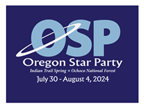Welcome back!
Each of the objects on this list has its own page itemizing what it is, why it’s interesting to observe, and the criteria for a successful observation. Also included are the constellation of each object, coordinates, and a photo showing what the object looks like – all you have to do is find, observe, and record your observations. I hope you enjoy the challenge.
Note – you will need your own detailed finder charts for these objects. Paper or computer charts are equally acceptable. You’ll also need to research some of this year’s objects to be sure you’re observing exactly what’s being asked for.
Star hopping, push-to and goto are all appropriate ways to find these objects.
Stretch your skill and imagination – see something new, something unimaginably old, something unexpected
- Even though this is a challenging list, you don’t need twenty years of observing experience or a 20-inch telescope to successfully observe ten of these objects.
The only way to know if you can see these objects is to have a look for yourself.
- The visibility of each object assumes dark, transparent, steady and non-smoky OSP observing conditions.
Requirements to receive a certificate
- To receive the observing certificate, you need to have descriptive notes and/or sketches that clearly show you observed any ten (10) of the objects on this year’s list.
- Simply noting that you saw ten objects doesn’t count.
- Observers who successfully observe ten objects also receive a cool observing pin.
When finished, bring your record of observations to the Observing Program table next to the Information Tent to receive your pin. Please check the information tent for updates on when the Observing Program table will be staffed, and where it is going to be for the next session. Typically it will be manned later in the afternoon.

